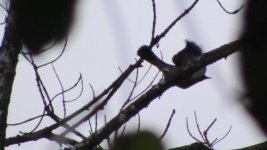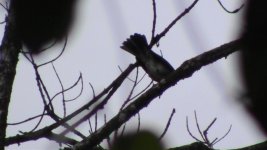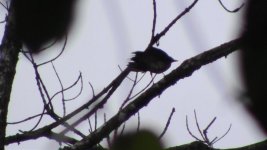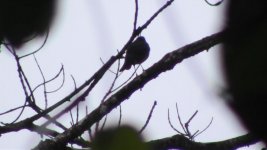Pocosol Biological Station, Alajuela, Costa Rica, March 15, 2019
Observed this thrush which I noted had a yellowish bill and eyering, dark slaty cap and back, and pale underparts. I got these poor photos. Structurally looks like a Turdus to me rather than a Catharus nightingale thrush, and yellow bare areas observed are consistent with White-throated Thrush, but I don't trust my ability to discern yellow from orange or red in the poor rainforest light to distinguish from the nightingale thrushes. Additionally I thought maybe the bright white vent might be a good mark for White-throated Thrush. I'd appreciate others' thoughts on this bird.
Observed this thrush which I noted had a yellowish bill and eyering, dark slaty cap and back, and pale underparts. I got these poor photos. Structurally looks like a Turdus to me rather than a Catharus nightingale thrush, and yellow bare areas observed are consistent with White-throated Thrush, but I don't trust my ability to discern yellow from orange or red in the poor rainforest light to distinguish from the nightingale thrushes. Additionally I thought maybe the bright white vent might be a good mark for White-throated Thrush. I'd appreciate others' thoughts on this bird.









